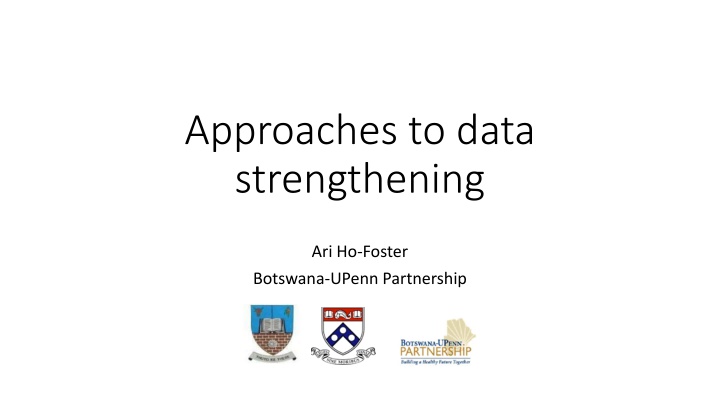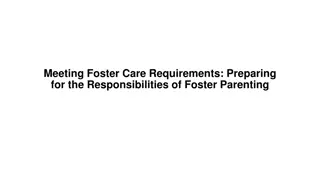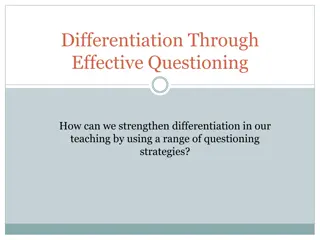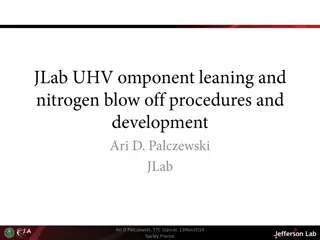
Data Strengthening Approaches in Healthcare Facility
Learn about enhancing data acquisition practices in healthcare contexts, focusing on assessing current practices, developing innovative solutions, and supporting data quality and management for improved patient care.
Download Presentation

Please find below an Image/Link to download the presentation.
The content on the website is provided AS IS for your information and personal use only. It may not be sold, licensed, or shared on other websites without obtaining consent from the author. If you encounter any issues during the download, it is possible that the publisher has removed the file from their server.
You are allowed to download the files provided on this website for personal or commercial use, subject to the condition that they are used lawfully. All files are the property of their respective owners.
The content on the website is provided AS IS for your information and personal use only. It may not be sold, licensed, or shared on other websites without obtaining consent from the author.
E N D
Presentation Transcript
Approaches to data strengthening Ari Ho-Foster Botswana-UPenn Partnership
Context Limited resources to gather clinical data Historically, existing electronic health information systems inflexible and unreliable Data acquisition not viewed as a behaviour: Data collected as part of patient care management Patient care management (rightly) prioritised In context of eHIS downtime, HCWs develop adaptive behaviours that allow the HCW to carry out patient care Context not taken into account Data collector often not the beneficiary of collecting data
Role of the data acquisition core (i) Assess and map out facility-based data acquisition practices for the identified core data elements (identified by research project teams) (ii) Initiate development of novel data acquisition solutions; facilitate data quality, management and utilization at facility level (iii) Conduct needs assessment for further development of eHIS for identified core data elements
(i) Assess and map out facility-based data acquisition practices For the identified core data elements, as identified by research project teams Includes: Observing existing patient flows, Identifying HCW time and effort priorities, challenges Identifying HCW s immediate operational information needs, reporting information needs, engage facility managers and decision makers on reporting priorities Recommendations of system, changes that can address information needs, optimise utility of information already gathered, reduce the time, effort and inaccuracies in preparing reports
(ii) Begin development of novel data acquisition solutions Support facility level development and evaluation of novel workflow solutions to optimize point-of-care data acquisition Support quality, management and utilization of core data elements identified by research teams Support standardization of data gathering and coding, proposing recommendations to data collection formats/templates where needed Support data quality and utilization through establishment of routine feedback loops to prospectively improve data quality (e.g routine data products)
(iii) Conduct needs assessment for further development of existing eHIS For the capture of identified core data elements Mapping data elements to paper and electronic sources Propose changes to existing eHIS to improve routine collection of these core data elements
Data Acquisition Core Team PIs: Doreen Ramogola-Masire, Lawrence Shulman Data Acquisition Core Manager: Ari Ho-Foster Data Quality Improvement Officer: TBN Health Informatics team: Ryan Littman-Quinn (BUP HI Director) Kagiso Ndlovu (UB e-Health Research Centre) TBN (Coordination/tech support) Additional support by content and operational experts, where possible






















